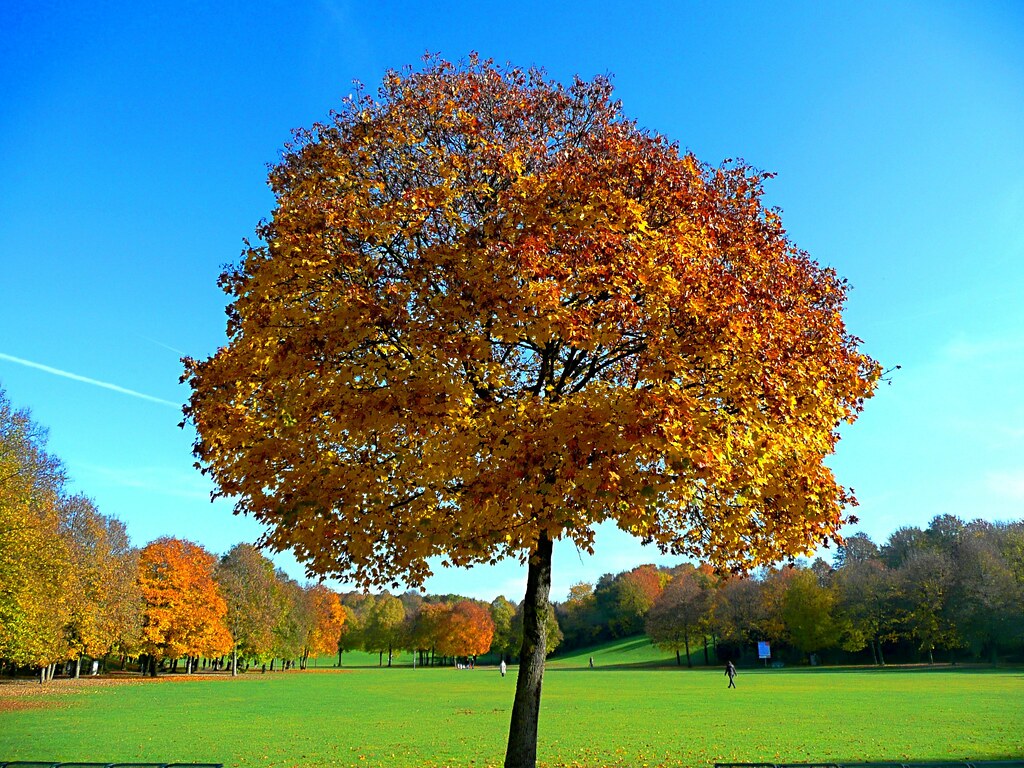One of the most frequently asked questions we receive is “what is the best tree for my property?”. This requires a detailed discussion about potential long term considerations as the tree matures. This is a complicated question with many variables to consider.

Property Location
Location of the property is the first variable to be looked at because it determines the hardiness zone. Hardiness zone tells us where specific types of plant material that will survive. This takes into account factors such as minimum winter temperature, length of frost free period, summer rainfall, maximum temperature, snow cover and maximum wind speed. For reference Milton is in Zone 6a. Other communities that share this rating are Cambridge and Carlisle. Lakeshore communities tend to be warmer therefore, having a higher rating of 6b and up. This includes Oakville, Mississauga, Burlington and Hamilton. Toronto is warmer still having a rating of 7a. Communities away from the lake tend to be cooler; Georgetown and Guelph have a rating of 5b.
The Role of the Tree
The next consideration is “what do you want the tree to do?”. For purposes of analysis this is generally broken down into the following three concerns:
- Privacy
This is probably the number one concern as many new developments have smaller properties with the homes in close proximity. Windows are often aligned requiring a view block or visual diffusion to provide the feeling of privacy. Planting space is often limited and at a premium so determining the best way to achieve this in the most efficient manner is important. Ranking the views to be blocked in order of importance is the first step as it is usually not possible to block all site lines.
The next step is to determine the seasonality of the privacy requirements. For instance year round privacy may require evergreens (such as Norway Spruce, Eastern White Pine) or deciduous trees that may hold their leaves through the winter (English Oak). If only summer privacy is required the possibilities greatly increase as there is a large selection of deciduous trees and shrubs available.
- Shade/Wind Protection
Many homeowners wish to plant trees on their properties to provide more comfortable outdoor seating space or to cool indoor areas with excessive sun exposure. As with the privacy concern this can be seasonal thus utilizing a wide range of deciduous plant material or year round with evergreens.
Often there is a need for reducing sun but not blocking it completely. Trees such as Locusts are valuable in this situation as they provide a permeable canopy that allows a certain level of sunlight to penetrate. This is often a desired characteristic around patios and bar areas as well as over lawns as the level of light is diffused but sufficient to allow the growth of grass.
- Ornamental Value
This is a wide ranging category that takes into consideration factors such as seasonal colour, leaf shape, flowers/blossoms, bark, and branching patterns.
1. Colour
Seasonal colour is a major attraction, especially in the fall, when many trees become scenic highlights. Species such as the Red Maple and Japanese maple provide vivid reds while Sugar maples turn a magnificent yellow/orange/gold. Springtime can also be spectacular with trees such as the Princeton Gold Maple providing a bright yellow/green hue that captures the eye. There are a number of trees that provide leaf colour all summer long. The Dawyck Purple Beech and Japanese Maple are such examples. A number of trees such as the Harlequin Maple have variegated leaves consisting of a green leaf with a white margin.
2. Shape
Leaf shape can vary dramatically and provide considerable aesthetic value. The Japanese Maple comes in many varieties with leaves ranging from large palmate to finely serrated. Maple trees have large lobed leaves while Locust trees have small compound leaves.
3. Flowers
Many trees are also valued for the flowering components including the Magnolia, Ivory Silk Lilac, Tulip Tree and Walnut. These can range from large tulip like flowers to the small blossoms found on Crabapple and Flowering Cherry trees. The large creamy white flowers of the Ivory Silk Lilac are eye catching as well as offering a pleasant scent in late spring.
4. Bark
Bark can be another interesting characteristic to add visual interest. The Paperbark Maple has a year round reddish/brown bark that is eye catching while trees such as the Autumn Blaze and Silver maples are smooth grey-silver.
Site Conditions
Once it has been determined what function the tree is to have it is necessary to examine the site conditions to ensure a good fit.
- Size
The size of the site and tree is a primary concern when deciding which tree to plant. The majority of trees experience considerable growth through their lifecycle and it is necessary to plan for this. A common error that individuals make when planting trees is planting too closely to a structure. This mistake can result in the tree outgrowing the space. Branches can encroach on windows and rooflines while the root system may damage foundations while clogging weeping tiles and rupturing water lines. The sight of a Colorado Blue Spruce planted 10’ from a home very common.
The site for the tree should be selected based on the expected size of the tree throughout its lifecycle. Many of the new cultivars are genetically engineered to stay smaller than their predecessors. The Redpointe Maple is a cultivar of the Red Maple that provides the same beautiful fall colour while being much smaller and suitable for the current generation of residential lots.
- Growth Habit
The growth habit of the tree should also be of concern. Growth factors including but not limited to whether the tree grows upright like a Dawyck or if it spreads out like a Linden. Many trees don’t exhibit the long term growth pattern until several years after planting by which time it is too late to re-plant and expensive to replace. A spreading tree planted too close to a patio or driveway will encroach on the usable space where if a more columnar tree had been planted this would not be the case. Similarly if privacy is a concern a narrow tree such as a European Hornbeam may not cover enough space.
- Site Suitability
The physical suitability of the tree for a particular site is a very important factor. The level of light a tree will receive is critical. Many species require moderate to full light in order to survive and thrive. Trees such as the majority of Maples and Oaks require full sun to reach their full potential growth habit.
There are a limited number of trees that can survive in understory conditions. Hemlocks and Yews are the exception as they will do well in less than moderate light conditions.
The Japanese Maple is a species that does well in moderate light conditions and actually thrives in combination with shelter from the wind.
Other factors to consider include:
1. Soil pH
Is the soil acidic or basic? Soil Ph measures the amount of hydrogen present in the soil. As the hydrogen increases the Ph decreases becoming more acidic. Trees tolerant of an acidic environment include Dogwood and Beech. Austrian Pine, Honey Locust and Burr Oak are tolerant of alkaline conditions.
2. Moisture Levels
The level of moisture in the soil is a critical factor for growing trees successfully. Too much water can often be more dangerous than not enough so it is important to choose a species for the prevailing conditions. Drought tolerant species include the Maidenhair Tree and Colorado Spruce while trees tolerant of a wet environment are Red Maple, Hackberry and Sweetgum.
3. Salt spray/Pollution
This can be a major issue when planting along streets and sidewalks especially in areas that get significant snowfall as salt is transferred to the trees by airborne spray or melt water. Salt causes the trees to dry out that in turn can result in late leafing, smaller leaves or dieback. Salt tolerant trees can be planted as barriers to protect less tolerant species, these include the White Oak, Ivory Silk Lilac, Colorado Blue Spruce and Locust.




